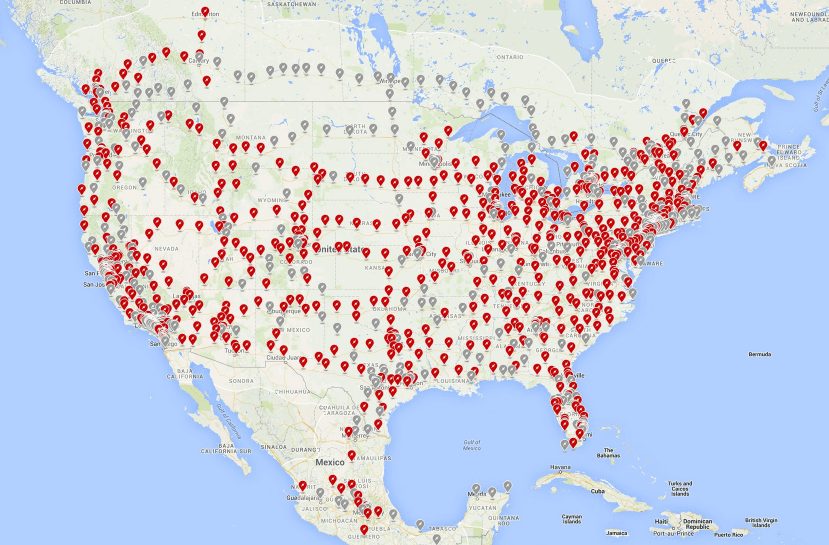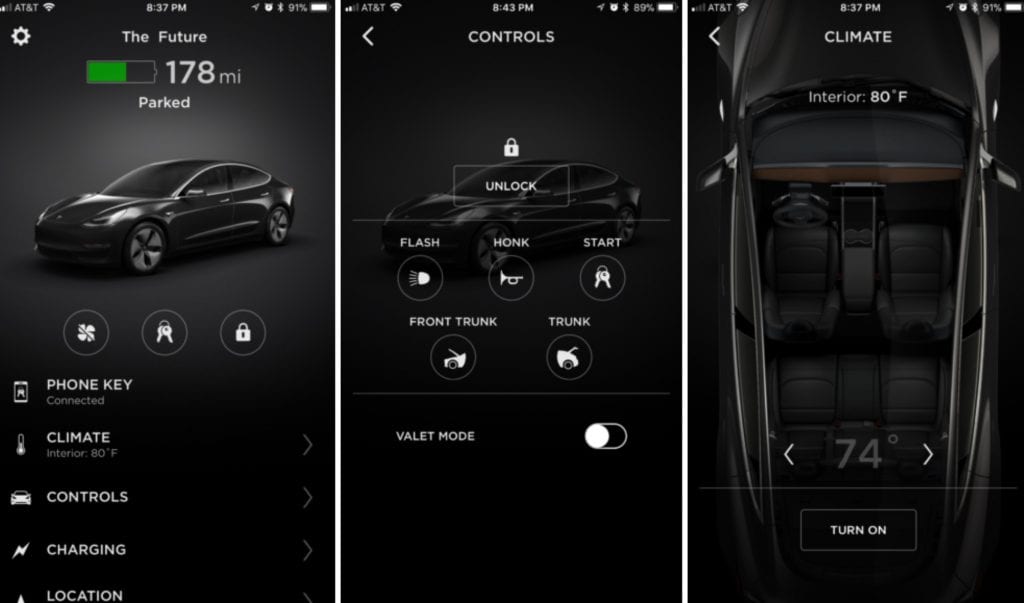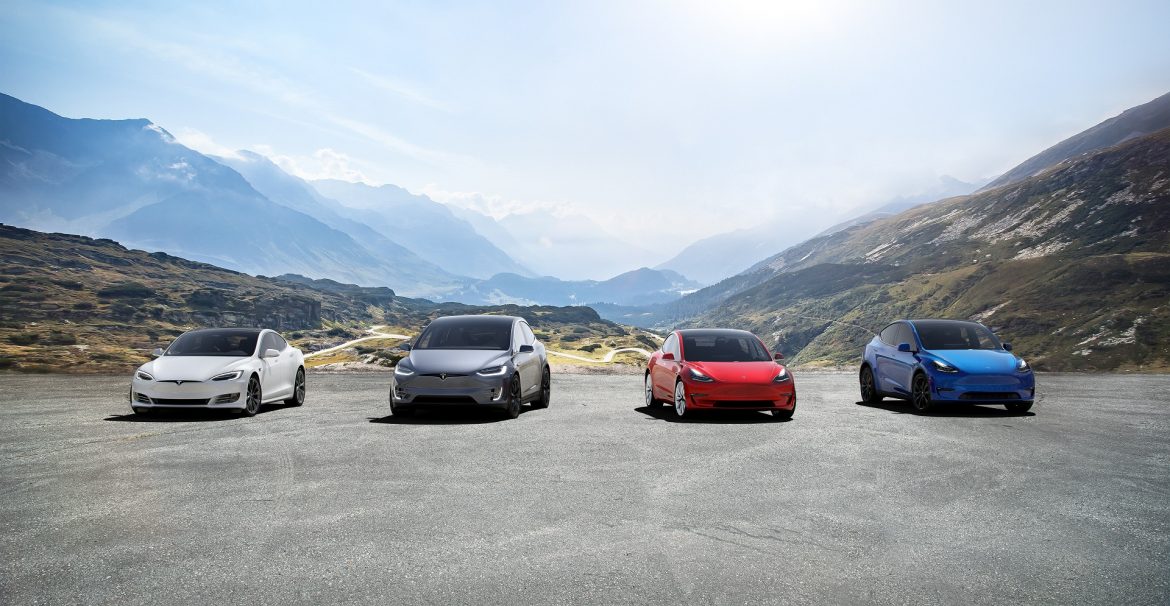So, you have decided to take the plunge and get yourself a new Tesla. Congratulations! Whether this is your first electric vehicle or not, we hope that this article will help you out in some way or another. So here are some things that you should consider before pressing that ‘Place Order’ button.
Which Tesla Model to Go For
As of the writing of this article, Tesla offers three different models that you can order today and receive promptly (the upcoming Model Y is still a year or so away). Deciding between the Model S, Model X, and Model 3 is going to be entirely dependent on your needs for the car. If you have a large family, then the Model X will probably be your vehicle of choice. Want a relatively small car that will give most performance cars a run for their money, the Model 3 Performance is you pick. Need the most range possible? The Long Range Model S with a range of 370 miles should be your consideration.
Here are the current offerings from Tesla with some relevant stats:
- Model 3:
- Standard Range Plus ($39,490)
- Range: 250 miles
- Top Speed: 140 mph
- 0-60 mph: 5.3 seconds
- Long Range ($47,990)
- Range: 310 miles
- Top Speed: 145 mph
- 0-60 mph: 4.4 second
- Performance ($56,990)
- Range: 310 miles
- Top Speed: 162 mph
- 0-60 mph: 3.2 seconds
- Standard Range Plus ($39,490)
- Model X
- Long Range ($84,990)
- Range: 325 miles
- Top Speed: 155 mph
- 0-60 mph: 4.4 seconds
- Performance ($104,990)
- Range: 305 miles
- Top Speed: 163 mph
- 0-60 mph: 2.7 seconds
- Long Range ($84,990)
- Model S
- Long Range ($79,990)
- Range: 370 miles
- Top Speed: 155 mph
- 0-60 mph: 3.7 seconds
- Performance ($99,990)
- Range: 345 miles
- Top Speed: 163 mph
- 0-60 mph: 2.4 seconds
- Long Range ($79,990)
It is also important to note that if you plan on supercharging a lot, Tesla is offering free unlimited Supercharging with every new Model S and Model X. However they have been known to end incentives like this, so double-check if this incentive is still active when you place your order.
Calculating Costs and Incentives
While every one of Tesla’s offerings is priced higher than the $37,185 average price of a new car in the United States, one has to take into account the fuel savings and possible federal and state incentives allotted to electric cars.
Right off the bat, if you purchase a Tesla before December 31, 2019, you will be eligible for a $1,875 EV tax credit from the federal government. This, however, goes away in 2020, so act quick. The Federal Government is not the only place that offers incentives for purchases of EVs. You state government also has some incentives that range from further tax credits, all the way to allowing you access to HOV lanes.
You can check with both Tesla’s page and the Department of Energy’s page to see a collection of state incentives.
Once the incentives have been sorted, you can start calculating the cost of fuel savings you will have over the life of the car. Tesla places this savings to be $4,300-$5,500 over six years, depending on which model you choose. Understandably, this number will be different for everyone as the number of miles everyone drives and the local gasoline prices are different for everyone.
The Department of Energy does have a page that updates regularly with the average price of gas per gallon and what the equivalent ‘eGallon’ costs in terms of electricity. At the time of this writing, a gallon of gas costs over twice as much as an eGallon, so figure out your average year costs and halve them to have some sort of idea of how much you will be saving.
Once again remember that if you make frequent trips frequently and get a Model S or X, your Supercharging will be free, so take that into account.
Installing a Home Charger
For maximum convenience, you are going to want to install a charger in your home. This will enable you to start every day with a “full tank”, something that you could not do with a gasoline car unless you lived at a gas station.
While you could plug you Tesla into a standard outlet, you will only get about 2-4 miles of range per hour. Meaning that it will take days to fully charge your car. This is why everyone will recommend that you install a home charger which can provide up to 44 miles of range per hour of charging. While Tesla does sell its own Wall Connector, you are not limited to a charger from Tesla. As long as you buy an adaptor for Tesla’s charging plug, you can buy a charger from companies such as Electrify America, Chargepoint, Siemens, etc.

You could install it yourself, but Tesla does include a page of their recommended electricians if that is the path you choose.
If you live in an apartment that will does not have any chargers, hope is not lost. We have an article detailing some of your possible avenues of action regarding owning an electric car in an apartment.
Planning Your Routes
The biggest hurdle most people will face when moving to electric cars will be the fear of depleting your battery with nowhere to charge. While this fear should be alleviated as more chargers start popping up over the years, you might be surprised to see how far you can go already. Tesla has a page where you can plan out trips and it will map you through Superchargers to how feasible the trip is. You will find that most places within the United States and most of Canada are already accessible. Though you might find that you are not able to go through some of the more rural and scenic routes, but this will most likely not be an issue as time goes on.

For more local planning you can use websites like Plugshare or OpenChargeMap to get an idea of what kind of chargers are in your local area.
If you are charging overnight you will have 100% charge, meaning that worst-case scenario if you buy a Model 3 Standard Range with Tesla’s current lowest mileage offering, you will still have 250 miles of range, far more than what the average person will drive in a day.
Keeping up to Date With Maintenance
While you are off the hook for oil changes (hey, another place you saved money), that does not preclude you from doing other basic maintenance on your car. Tesla still recommends that you do the following regular maintenance items.
- Cabin Air Filter (Every 2 years)
- High Efficiency Particulate Air (HEPA) Filter (Every 3 years)
- Tire Rotation, Balance and Wheel Alignment (Every 10,000-12,000 miles)
- Brake Fluid Test (Every 2 Years)
- Air Conditioning Service (Every 2 years for Model S, 4 years for Model X, 6 years for Model 3)
You will notice that brake pads are not listed, this is due to regenerative braking taking a lot of stress of the brakes, allowing them to last much longer. Of course, you should still keep an eye on them, but they won’t be replaced nearly as often as a traditional car.
Take Temperature into Consideration
While cold weather also affects the efficiency of gasoline-powered cars, it seems to have a larger effect on electric cars. The batteries have to be within their optimum operating temperature of about 70 degrees to function, meaning that when winter weather strikes, the car has to use energy just to warm itself up, otherwise the efficiency degrades drastically.
One easy way to counteract this issue is to precondition that car while it plugged in. Tesla has a precondition option within the app and recommend that you precondition the car for 30-60 minutes. This will bring the battery up to its optimum temperature and avoid too much range lose from happening. If your daily driving is not too long then you could forgo this step. It will be up to you to drive your car for the first few days of winter and see how much the range has changed.
Tesla once again has a page detailing some tips for owners during the winter months. Regardless of what kind of car you drive, you should always remain cautious with winter driving.
Familiarize Yourself with the Tesla App
The Tesla app will be your most useful tool during your ownership. The app will give you all the relevant information at the tips of your fingers. Some pieces of information and features that the app gives you includes:
- Charge status/current range
- Keyless entry and driving
- Climate control (including the aforementioned preconditioning)
- GPS location of your car
- Summon your car by using Smart Summon

You can even schedule any maintenance that you need through the app. The thought of your phone essentially being your car key may be alien, but we are sure you will get used to it quickly. As Tesla continues to update the software of their cars, we anticipate that the app will receive new features as well.
Explore the Community
The Tesla community is one of the most enthusiastic in the world and is not at all a cult. We encourage you to join communities such as r/teslamotors or TeslaMotorsClub if you need any help with your new car or just want to talk to other Tesla owners about Elon’s latest twitter jokes.
Once you have locked in your final decision, head on over to other article walking you through the steps of buying a Tesla as it is not the typical dealership experience.
